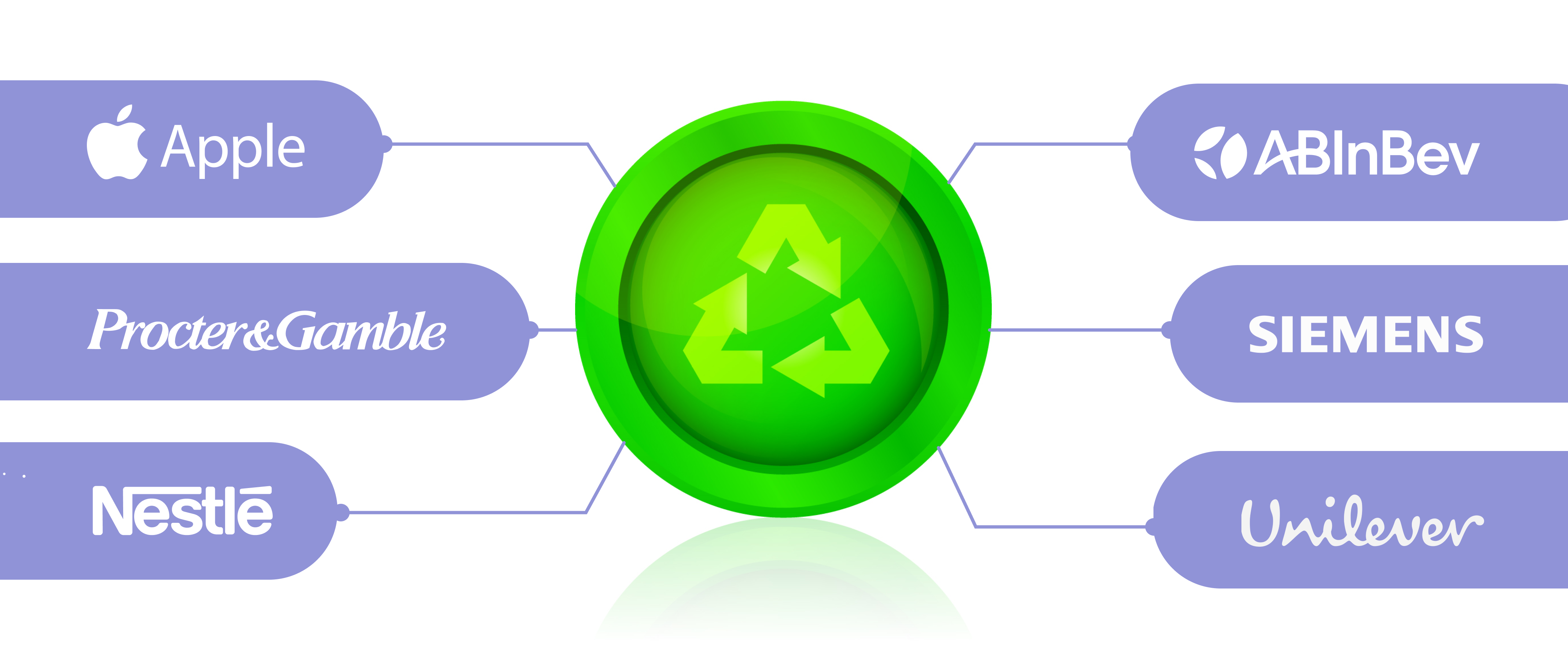
Almost every packaging company aims to be present in Europe. The reason is hidden in the mature stage of European countries’ development along with the high solvency of local consumers. Hence, such oversaturation with the world’s leaders in the industry makes the EU the locomotive of world packaging industry trends. What exactly should B2B packaging companies expect from the European market shortly? And how our cooperation with the world’s biggest packaging producers allows them to overcome all the difficulties – learn in the article.
Future European packaging industry: main determinants
To secure a bright future for your packaging business in the European market, you have to be aware of all the determinants that are shaping it.
Climate change
The top challenge in the world’s agenda today is climate change. In other words, due to emissions as a result of human activity, there are major shifts in the temperature regimes and weather patterns. So, the biggest producers of carbon emissions, which are big companies across all industries, face the need to reduce their impact on the environment. Such huge consumers of packaging as Apple, Procter & Gamble, and Nestle set the goals to become carbon neutral in the future. That will urge packaging B2B companies to do the same in order to stay on top of the industry.
Three Rs expansion
With the increase in global plastic production (nearly 158 million tons annually for 2023), another viral European trend that directly affects the B2B packaging business is the implementation of the rule of three R (Reduce, Reuse, Recycle). Obeying this rule consumers reduce using plastic and other environmentally harmful packages as much as possible. Already bought packages are being reused as much as possible and finally recycling already produced packaging is. The aim is to reduce single-use packaging demand, so production will decrease as a consequence. Hence, big B2B and B2C corporations also try to be eco-responsible and reboot production in order to become zero-waste companies.
Sustainability goals of huge enterprises

Most big companies across the world and industries have already set up sustainability goals to prevent climate change and waste pollution. Check what some of them declare to do in the future:
| The name of the company | CO2 emission reduction | Primary packaging to be recyclable or reusable |
| Nestle | CO2 net zero by 2050 | 100% by 2025 |
| Procter & Gamble | CO2 net zero by 2040 | 100% by 2030 |
| PepsiCo | CO2 reduction by 75% by 2030 | 100% by 2025 |
| Unilever | CO2 net zero by 2039 | 100% by 2025 |
| Ab-InBev | CO2 net zero by 2040 | 100% by 2025 |
| Siemens | CO2 net zero by 2030 | 50% by 2025 |
| Apple | CO2 net zero by 2030 | 100% by 2025 |
Smarter chemistry & Alternative packaging materials
Disregarding the “three R” rule and movement towards the plasticless world, plastic is still crucial for the world’s packaging because of its lightweight and toughness. Yet, European authorities strictly regulate the packaging that is produced or comes in Europe with the 94/62/EC directive. It requires the packaging producers to implement only recyclable packaging and take care of recycling at least 65% of all packaging materials.
Also, the use of alternative materials for producing packages such as peanuts, cornstarch, and even mushroom-based packages is highly encouraged. All this affects the production cost, hence the price of packaging for B2B companies.
Innovative technology implementation
When it comes to the shipping and packaging consumables that are highly exposed to the external environment (food, medicine, drinks) B2B companies use innovative technologies. There are systems for smart or active packaging that allow you to keep, manipulate, and trek the temperature inside the packaging. Hence, the products keep their added value longer and the companies using them are more competitive.
How new trends impact the marketing strategies of B2B packaging companies
Shifts in consumer behavior always affect B2B packaging companies regardless of their size. Besides direct changes such as logistics and higher cost of packaging, there are also serious marketing challenges that you, as an owner, need to deal with.
Brand positioning
As it was mentioned, those B2B companies that closely adhere to the trends are always more successful if compared with their more conservative counterparts. Your potential partners pay attention to what messages your B2B marketing campaign sends. In the case of packaging businesses, it is crucial to position yourself as an eco-responsible company that contributes to more sustainable packaging.
Communication channels
B2B companies used to rely on personal meetings when it comes to relationship building. But in a post-Covid era, online meetings became a more prioritized choice when it comes to setting up the partnership. The overall diversity of communication channels has also increased during the past years. So, having multiple communication options with potential partners is a must for B2B businesses.
Conclusion
Keeping in touch with trends is crucial for both B2C and B2B businesses that aim to become even more successful. Although it looks quite static, we can see the challenges that huge packaging producers are facing both in the production of packaging materials and packaging equipment. We are proud to be engaged in facing and succeeding in those fascinating and complicated tasks. It is easy to stay behind the departing train without having marketing professionals who can communicate with customers at the pace of trends. Check what Boost2Be offers and make your marketing more effective.
Latest articles
 Recyclable tubes by Pringles have hit Tesco’s shelves: why it’s important
Recyclable tubes by Pringles have hit Tesco’s shelves: why it’s important
More and more famous companies are taking steps to become carbon neutral in the nearest and further future. These days we can see how PepsiCo, Siemens, Procter & Gamble, and many others have already set ambitious milestones for CO2 reduction. Another great news on sustainability shows Pringles – the famous stackable potato-based chips producer.
 Business cultural differences between China and Germany
Business cultural differences between China and Germany
Around $204.77 billion worth of goods and services Germany imported from China in 2022. Meanwhile, Germany’s export to China in 2022 is worth around $113.38 billion. Such huge numbers underline the importance of China – Germany trading relationships for both countries. But what are the difficulties that business owners from China and Germany bump into when trying to set up mutual business relationships? Learn what are the main business cultural differences between China and Germany and how to overcome them in the article.
 Consumers won’t buy canned wine: a new survey on preferred packaging type was released
Consumers won’t buy canned wine: a new survey on preferred packaging type was released
The new study by the Ehrenberg-Bass Institute for the Wolf Blass Foundation brings new evidence on preferred wine packaging for consumers. The study was conducted in Australia with 1200 participants. Consumers were asked what their preferred choices for wine packaging are.
 Bacardi claims to launch the world’s first hydrogen-fuelled glass bottle
Bacardi claims to launch the world’s first hydrogen-fuelled glass bottle
Utilizing hydrogen as the primary energy source is one of the milestones for many countries around the world, which still seems to be unachievable in the near future. However, the famous spirit company Bacardi makes that milestone much closer.
 Another European Country introduces reverse vending machines to achieve a circular economy
Another European Country introduces reverse vending machines to achieve a circular economy
Most European countries have already introduced a deposit return scheme (DRS) for single-use drink containers by using reverse vending machines (RVMs). Now, this important step toward a circular economy has been made by Hungary. Yes, the local governmental body responsible for the collection and management of municipal solid waste (MOL Hulladékgazdálkodási) in collaboration with TOMRA will optimize the returning process of beverage containers.
 2024 trends of the European Packaging Industry and its impact on marketing strategies
2024 trends of the European Packaging Industry and its impact on marketing strategies
Almost every packaging company aims to be present in Europe. The reason is hidden in the mature stage of European countries’ development along with the high solvency of local consumers. Hence, such oversaturation with the world’s leaders in the industry makes the EU the locomotive of world packaging industry trends. What exactly should B2B packaging companies expect from the European market shortly? And how our cooperation with the world’s biggest packaging producers allows them to overcome all the difficulties – learn in the article.
 Sustainable solution for HORECA segment: BIODROPS launches biodegradable capsules for shampoo
Sustainable solution for HORECA segment: BIODROPS launches biodegradable capsules for shampoo
Given the ongoing sparkling debates on single-use plastic ban within the European Union, any sustainable startups, which can help to ditch plastic are becoming more important. Here is one of the cases, which can revolutionize the way we treat personal hygiene products in hotels.
 Finland and Italy softening restrictions on single-use packaging in EU
Finland and Italy softening restrictions on single-use packaging in EU
Finland and Italy want to soften the European Packaging and Packaging Waste Regulation (PPWR). Both countries would like to avoid restrictions on single-use packaging, especially for food and beverages. Finland and Italy called on the paper for the removal of targets for reuse and the cancellation of all restrictions on single-use packaging at the last Environment Council (December 18) in Brussels. That is when EU Ministers expect to close political negotiations on the new PPWR European Parliament approved last month.
 8 SEO Trends in 2024: Useful tips for search engine optimization
8 SEO Trends in 2024: Useful tips for search engine optimization
With the increasing popularity of digital marketing implementation in the B2B sector, it is crucial to pay attention to search engine optimization. Otherwise, the voice of your brand will get lost in the ocean of others. At the same time, there are no constant rules for SEO optimization since they depend on changes in customer behavior and updates in search engines. How to increase the effectiveness of your SEO optimization in 2024 – read below.
subscribe for newsletter

Let’s talk!
If you′re interested in talking to us about a special project or opportunity please contact us via the form below and we′ll get back to you within 24 hrs.
Thank you, your application has been accepted!
Our manager will contact you shortly

